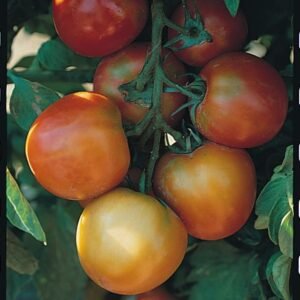-
FREE P&P ON ORDERS over £25 - £2.50 P&P ON ORDERS under £25
We are unable to deliver to N.Ireland, Europe or The rest of the worlD
Organic Chilli Pepper ‘Ring of Fire’
£2.30
Availability: In stock
70,000 – 80,000 SHU
The Ring of Fire chilli pepper is a long, thin chilli pepper originating from South America.
It reaches maturity in around 100 days and is very productive. The fruits are up to 7cm long and can be picked when green or red. The more you pick, the more fruits you will get! The plant itself is an upright, bushy plant and grows to around 45cm in height.
The Ring of Fire chilli is an ideal chilli pepper for making hot, fruity sauces and also dries extremely well if you want to make chilli flakes.
The chilli seeds should be sown in trays or modules from Jan – Mar at 18-21C. Pot on when seedlings are large enough to handle and continue to pot on as they grow. Plant out in late spring/early summer. For best yields grow in a greenhouse.
Seed Story
Chilli Peppers were brought to Europe by Christopher Columbus in the 1400’s.
Chillies originated in Mexico and are one of the oldest cultivated crops in the Americas. They have been part of the human diet since 7500BC.
The Aztecs discovered the medicinal qualities of capsaicin which is what gives chillies their heat. capsaicin was used to reduce blood pressure, relieve pain and is even said to increase metabolism and help with digestive issues.
Chillies are the traditional treatment for toothache in Mexico
In Africa, chillies are laid on fences around crops to deter elephants!
There are many species of capsicum but only 5 have actually been domesticated including two very popular types:
Capsicum Anuum which includes bell peppers, paprika, jalapeño’s and cayenne
Capsicum Chinensis which includes the habanero and scotch bonnet.
Chillies were introduced to Asia by Portuguese traders who sold them based on the similarities to black pepper in taste. They then introduced them to India at the end of the 15th century.






